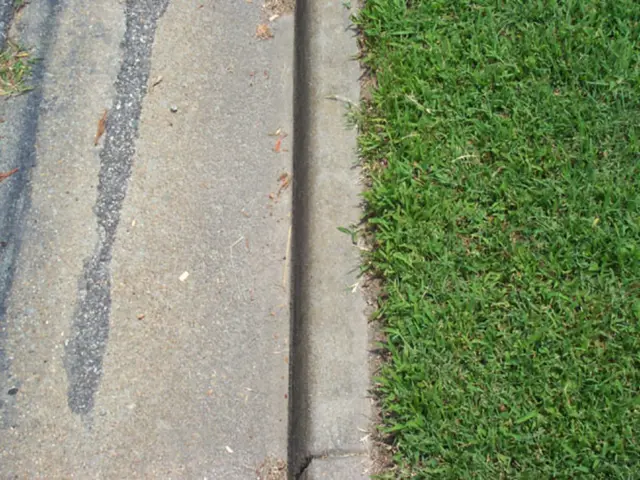Distinguishing Age Spots from Skin Cancer: Recognition Guidelines
Distinguishing Age Spots from Skin Cancer: A Comprehensive Guide
As we age, harmless brown spots known as age spots may emerge on the skin, resembling certain types of skin cancer. Both conditions are prevalent in sun-exposed areas, but understanding their differences can help individuals identify when medical attention might be necessary.
Age spots and skin cancer share some superficial similarities, yet their characteristics differ significantly. Examining texture, color, and location can help distinguish between the two.
Age Spots
Age spots, also called solar lentigines or liver spots, are relatively flat, round or oval spots that are usually darker than the surrounding skin. They are generally smooth to the touch and do not cause itching, pain, or crustiness. Age spots develop due to the overproduction of melanin, a pigment that protects the skin from UV radiation. These spots tend to appear on middle-aged adults and are more common on light skin but can affect any skin color.
Skin Cancer
Skin cancer is a medical condition that poses a threat to one's health. Cancerous cells appear most frequently in sun-exposed areas, such as the face, hands, shoulders, and neck. Skin cancer develops as a result of damage caused by UV radiation, often from prolonged sun exposure or tanning beds. Unlike age spots, skin cancer can spread to other parts of the body if left untreated.
Common types of skin cancer include basal cell carcinoma, squamous cell carcinoma, and melanoma. Actinic keratosis, a precancerous condition, may also resemble age spots but should be monitored carefully, as it can evolve into skin cancer if left untreated.
It's crucial to be attentive to any new or changing marks on the skin. Early detection of skin cancer can facilitate effective treatment and improve health outcomes.
Symptom Comparison
Recognizing the differences in symptoms between age spots and skin cancer can aid in timely action.
Age Spot Symptoms
Age spots are generally well-defined, smooth, and round or oval in shape. They vary in color, ranging from yellow, brown, or gray, and usually appear on sun-exposed areas. Age spots may become more pronounced in the summer and tend to fade slightly in the winter.
Skin Cancer Symptoms
Skin cancer symptoms can be irregular and vary based on numerous factors. Signs of a cancerous mole or lesion include an asymmetrical shape, irregular borders, and color changes, as well as changes in size, shape, or location. Other symptoms can include pain, itching, oozing, or bleeding, and the appearance of red or pink patches, crusty or scaly patches, or raised, red patches on the skin.
When to Contact a Doctor
Any unusual changes in the skin, such as new or changing moles, lesions that bleed, itch, or do not heal within four weeks should be examined by a dermatologist. Regular skin exams, especially for those with a history of sun exposure or a family history of skin cancer, are strongly recommended.
Diagnosis and Treatment
Age spots are typically diagnosed through a physical examination, but if needed, a skin biopsy may be performed to rule out skin cancer or other conditions. If skin cancer is suspected, further testing, such as lab tests or imaging, may be required.
Treatment options for age spots and skin cancer vary depending on several factors. Age spots can be resolved with over-the-counter creams or professional procedures, including laser treatments, cryosurgery, microdermabrasion, and chemical peeling. Skin cancer treatment depends on the type and stage of the cancer, as well as the individual's health. Options can include surgical removal, topical therapies, radiation therapy, chemotherapy, and immunotherapy.
Early detection and awareness are key in managing age spots and skin cancer effectively. Be vigilant about changes in your skin, and never hesitate to consult a dermatologist if you notice any concerning signs.
- Seniors, especially those with a history of sun exposure or a family history of skin cancer, should prioritize regular check-ups with dermatologists to monitor for any potential skin cancers, such as melanoma.
- Scientific advancements in oncology have led to numerous treatment options for various types of skin cancer, including basal cell carcinoma, squamous cell carcinoma, and melanoma.
- While age spots and otherskin cancer share some superficial similarities, understanding their differences can help individuals recognize signs of skin cancer early, enabling timely medical intervention.
- Health-and-wellness programs often prioritize skin-care, encouraging regular self-examinations for signs of skin cancer and age spots, as well as the use of protective measures such as sunscreen and clothing to shield the skin from harmful UV radiation.
- Skin conditions like age spots and skin cancer, being prevalent among individuals in sun-exposed areas, underscore the importance of dermatology in addressing these medical-conditions and promoting proper skin care and protection.








